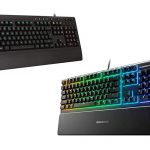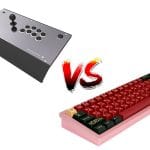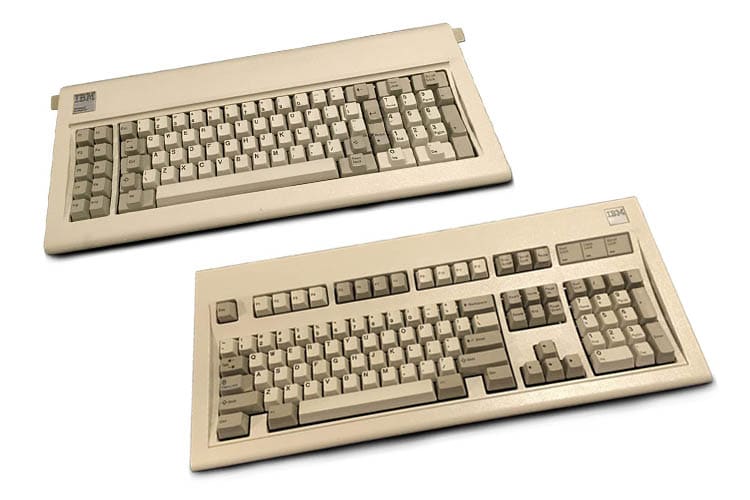
Buckling spring switches belong in the older generation of keyboards. They can still be found to this day but they have already declined in popularity. The buckling spring switch keyboard is highly favored by typists because it caters to the needs and lifestyle of a typist. They are also widely known for their iconic tactile and type-writer-like sound.
Buckling Spring keyboards were manufactured and popularized in the 1980s by IBM. Thes main defining feature was their use of a spring that buckles when a keystroke is made. These switches pioneered today’s switches and are highly considered to be the father of all modern mechanical switches.
This post will tell you about what a buckling spring switch is. It would also tackle the history of this type of switch. It will also talk about how the buckling spring switch works, what it feels like, and does it still exists today?
Quick Introduction To Buckling Spring Keyboard Switches
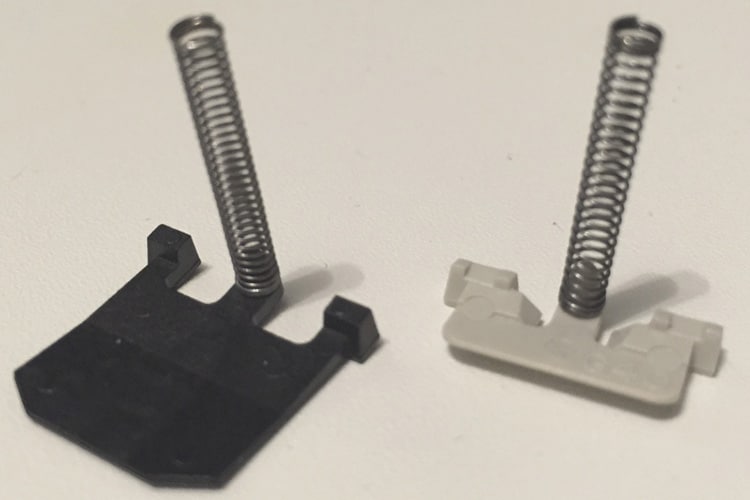
The buckling spring switch is a switch that simply uses a bending or buckling spring to work. When a key is pushed, the spring underneath will slightly compress until it bends or buckles to one side. These types of switches were popular in the 1980s and early 1990s.
The buckling spring switch keyboard is mainly manufactured for typists and not for gamers. Due to this, the buckling spring switch is not prominent for gamers. The buckling spring switch is also large, emits a loud sound, and has a bulky keystroke.
Even though the keyboard boasts a high-quality performance, its price is still somewhat cheap in comparison to other types of keyboards. During this time and day, the buckling switch may have dwindled in popularity, but it is still a great keyboard.
History of Buckling Spring Keyboard Switches
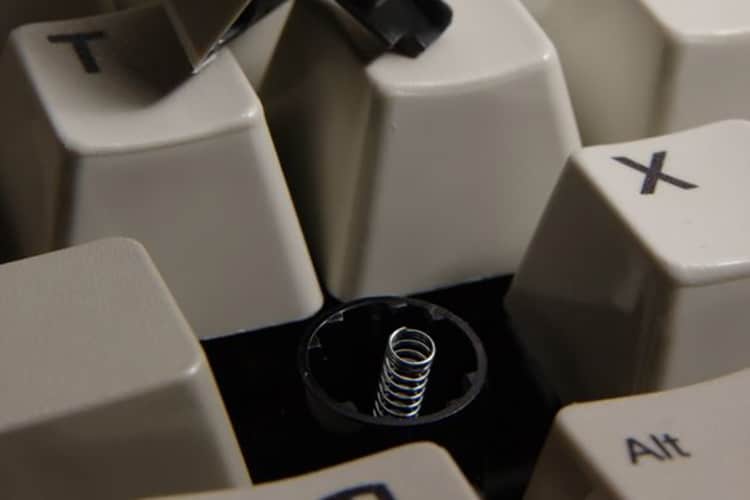
Richard Hunter Harris was the inventor of the buckling switch keyboard which was later patented or absorbed by IBM in the year 1977. The name of the buckling switch keyboard was literally derived from the way the physical system or mechanism works. When you press a key, the spring underneath compresses and bends between the keycaps and the pivoting hammer. This in turn produces an auditory response.
Initially, Mister Harris was having an issue with the design of the switch but was later solved when he put a pivoting hammer beneath the spring, which makes it move to the correct direction or location after each successive key press.
IBM Model M
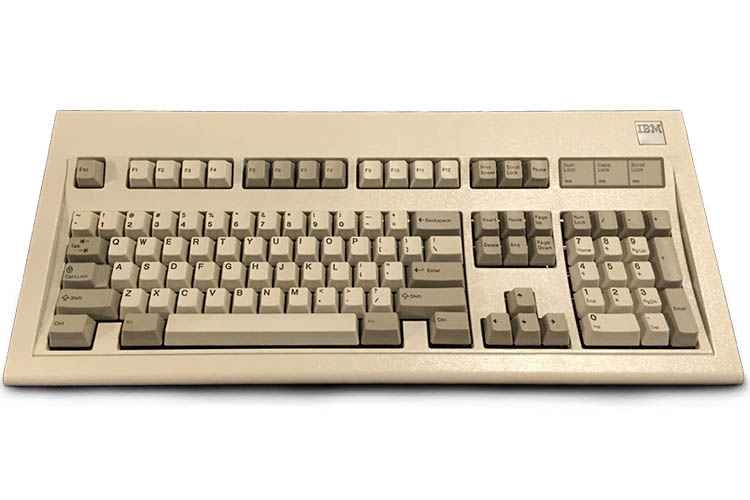
In the year 1984, one of the most recognized and original keyboards was introduced. It was named the IBM Model M. On this day, it is considered to be classic or ageless by a lot of keyboard experts. It is widely known for its iconic feel and sound as well as its incredibly robust build quality.
Through the years, model M had little to no modification. The people who used the IBM Model M feel good about the different or unique touch and sound it emits. It is also considered to be very classy or sophisticated among the typists who use it. It is also considered to be highly effective according to some people.
The IBM Model M is also considered to be very enjoyable to use due to its design which makes it less vulnerable to dirt and wearing down. It is also considered to be long-lasting in comparison to its competitors. The vintage aesthetics also make it more appealing to people who like to have classy-looking things.
In the year 1994, IBM sold the production to Lexmark, which made a significant change in the design of the keyboard. During Lexmark’s production of the keyboard, they used a single color for the keys, they used lightweight plastic shells, but the buckling spring was kept.
IBM Model F
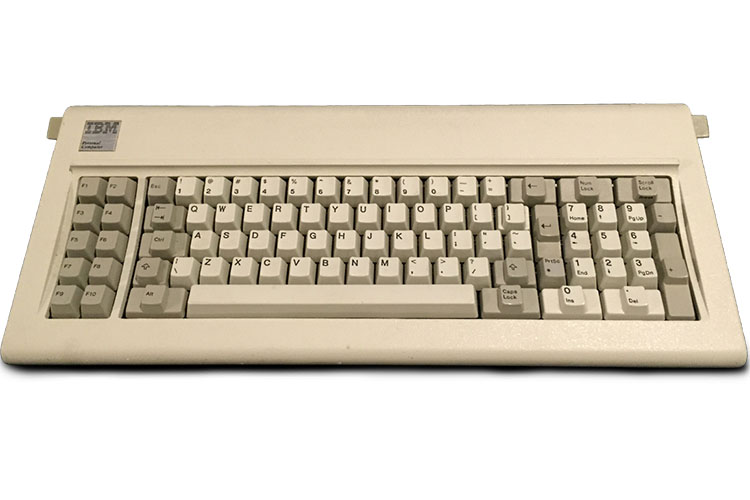
Produced between the years 1981 and 1994, IBM Model F is one of the first to use the buckling switch. They are considered to be lightweight and solid. The IBM Model F also uses some of the designs of the beam spring keyboards. The keycaps of the model f are easy to modify because of their similar shapes and sizes.
The IBM Model F is the first to utilize the buckling spring system. Its construction was made to take over and replace the much more pricey and complicated beam spring keyboards. It is considered to be tighter and lighter. IBM even characterizes them as ergonomic and convenient.
The internal structure of the IBM Model F is made up of an arched metal backplate and an arched metal upper plate. Its printed circuit is adjustable, which means that it is also arched when attached to the backplate. The keycaps of the IBM Model F have similar shapes and sizes, which makes them easy to customize and adjust.
How Do Buckling Spring Keyboard Switches Work?
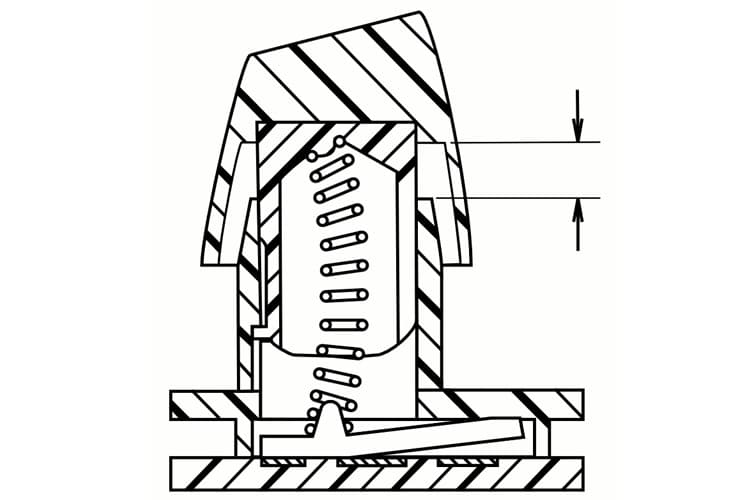
How the buckling switch works can be taken literally. It operates in a key system that involves a spring between a keycap and a rotary hammer buckle. Every time you press a key, the spring inside compresses and when the pressure is already too much, the spring will bend or buckle. After the spring hits the electrical contact, a keystroke will be registered.
The key in the buckling spring switch is much bigger than that of the current or modernized keyboards. Due to its larger size, the keys are pressed harder to register a keystroke. Because of the larger size keys, it is very comfortable to use for typing.
What Do Buckling Spring Keyboard Switches Feel Like?
According to some users of the buckling switch, the keyboard feels machine-like and automated yet somehow feels dynamic and interesting. They claim that the sound it produces is not distracting, to some extent, it can be considered a white noise by some users. Due to its great force, some users like it because they feel that their fingers are being exercised.
Some people on the other hand have a different opinion for the buckling spring switch keyboard. They claim that the keyboard feels rigid, creaky, and not suitable for gaming. The buckling spring switch also has a 2KRO, which means that it can only register 2 clicks at a time, any more than that may cause the keyboard to lag.
Judging by the two opinions, it is clear that the buckling spring switch keyboard mainly caters to the needs of the typists and not necessarily for the gamers. So if gaming is your primary reason for using a keyboard, then the buckling spring switch may not suit your needs.
Are Buckling Spring Keyboard Switches Still Used Today?
In 1996, the production of the buckling switch keyboards was taken over by the company Unicomp. Unicomp is a company situated in Kentucky. When the contract of Lexmark with IBM expired, Unicomp took over the production and made some new and different designs. Key layouts were updated, and the buckling switch keyboard was improved.
Some of the new layouts or designs made by Unicomp feature an integrated pointing stick mouse. Some of the new designs also feature a trackball. But if you are someone who prefers classic designs, do not fret, they still manufacture the classical keyboards.
Unicomp also explored and integrated some new customizations for the Model M. With these customizations, you can blend the classic features of the buckling switch keyboard with the modernized and current keyboards. It’s like a mixture of old school and new hotness, what more can you ask for?
To conclude this post, the buckling spring switch is one of the older generation keyboards, it has had a long history. It peaked in popularity during the 1980s and 1990s and now has dwindled a bit in popularity and yet it persists through this day. Through the years it went through several changes that let it survive today. Which makes it a classic for some typing enthusiasts. So, did the buckling spring switch pique your interest? If so then go ahead and grab one.

The KBE team is dedicated to sharing our knowledge and creating useful resources about computer keyboards. This article was written as a team collaboration, combining our knowledge and years of experience using, building and modding keyboards. Meet the team here.

